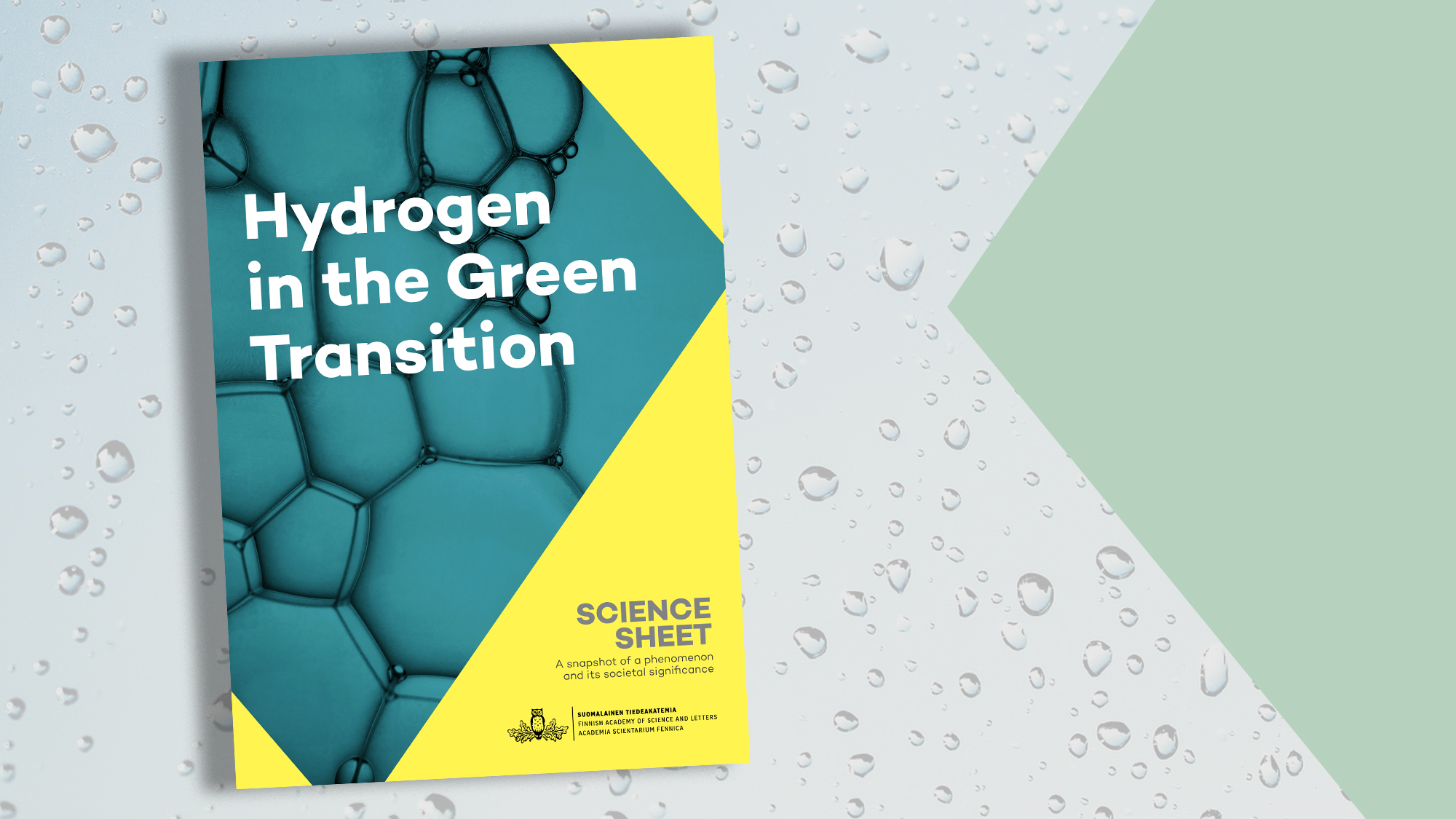Finnish Academy of Science and Letters’ new Science Sheet provides an overview on questions and trends related to hydrogen.
Finland aspires to be a pioneer in the production of clean hydrogen. According to the decision principle of the Finnish government, Finland is well placed to produce at least ten per cent of the zero emission hydrogen of the European Union by 2030. Several hydrogen production projects are planned, whereas in some of the projects an investment decision has been taken.
So far, however, Finland has not produced a strategic overall vision on the role of clean hydrogen in the green transition, shows a recent Science Sheet ‘Hydrogen in the Green Transition’ by the Finnish Academy of Science and Letters.
Rapid changes are needed to meet the hydrogen targets
The decreasing production costs of renewable electricity and the need to withdraw from fossil fuel economy have raised interest in using clean hydrogen. In Europe, hydrogen has also been seen as a solution to decouple from Russian fossil energy and to strengthen energy self-sufficiency.
National clean hydrogen production goals require rapid and strong increase in zero emission electricity production. The production of clean hydrogen outlined in the decision principle of the Finnish Government requires 50 terawatt-hours of renewable electricity, whereas the total electricity production of Finland was 69.2 terawatt-hours in 2022. Simultaneously, the electrification of the energy system means that fossil fuels are replaced by renewable electricity. As a result, the overall demand for electricity will increase.
Water-to-hydrogen conversion coefficient of efficiency is over 65%. The number describes how much recoverable energy is produced compared to the energy that is used to produce hydrogen. This is in contradiction with energy efficiency goals, such as those which the EU targets oblige.
“To solve these challenges, key actors should be brought together to discuss the direction of hydrogen strategy and joint actions”, outlines professor Riitta Keiski from the University of Oulu.
Keiski acted as a scientific advisor for the Finnish Academy of Science and Letters’ Science Sheet, which, based on the views of 13 Finnish researchers, compiles a snapshot of the importance of hydrogen and its societal significance to Finland.
Integrating ecological and social sustainability into hydrogen solutions
According to the researchers, hydrogen should be seen as a part of a solution in the green transition. In hydrogen production, the environmental load is focused on the upstream parts of the supply chain, geographically likely very far from the application sites. For this reason, hydrogen solutions must be assessed in the context of natural resources and ecological and social sustainability.
“Building the future on hydrogen might create new dependencies with respect to e.g. the further increasing need for the production of renewable electricity and access to critical raw materials” Riitta Keiski points out.
From the perspective of social sustainability, the rapid increase in wind power projects under the priority procedure for authorization processes, may undermine the appeal possibilities of local communities.
Finland has also clear strengths. According to the researchers, Finland’s strengths in clean hydrogen production are in particular a good level of access to renewable energy, strong research base and expertise in businesses in both hydrogen production and use, as well as the potential for further processing of clean hydrogen.
Additional information:
Hydrogen in the Green Transition – Science Sheet
Professor Riitta Keiski, University of Oulu
Scientific advisor of the Hydrogen Science Sheet
+358 40 726 3018
riitta.keiski@oulu.fi
Academy Secretary Jaakko Kuosmanen
+358 400 601 716
jaakko.kuosmanen@acadsci.fi
Knowledge broker
Linda Lammensalo
Phone: +358 50 308 7726
linda.lammensalo@acadsci.fi
Science Sheet gathers researchers’ snapshot of a current phenomenon
Hydrogen Science Sheet has been written in the Finnish Academy of Science and Letters’ project “Phenomenon maps” funded by Jane and Aatos Erkko Foundation. It provides a snapshot of a phenomenon and its societal significance for decision-makers. Science Sheets are a part of the development work of Finnish Academy of Science and Letters, which strives to finding the most suitable operating models for better evidence-informed decision-making.
The contents of the Science Sheet are based on discussions with the following researchers: Jero Ahola (Lappeenranta-Lahti University of Technology), Antti Arasto (Technical Research Centre of Finland VTT), Eeva-Lotta Apajalahti (Lappeenranta-Lahti University of Technology), Pasi Eilu (Geological Survey of Finland), Timo Fabritius (University of Oulu), Olli Himanen (Technical Research Centre of Finland VTT), Marko Huttula (University of Oulu), Tanja Kallio (Aalto University), Jari Kiviaho (Technical Research Centre of Finland VTT), Petteri Laaksonen (Lappeenranta-Lahti University of Technology), Seppo Niemi (University of Vaasa), Annukka Santasalo-Aarnio (Aalto University). The work was led by professor Riitta Keiski from the University of Oulu. A warm thank you to everyone!

